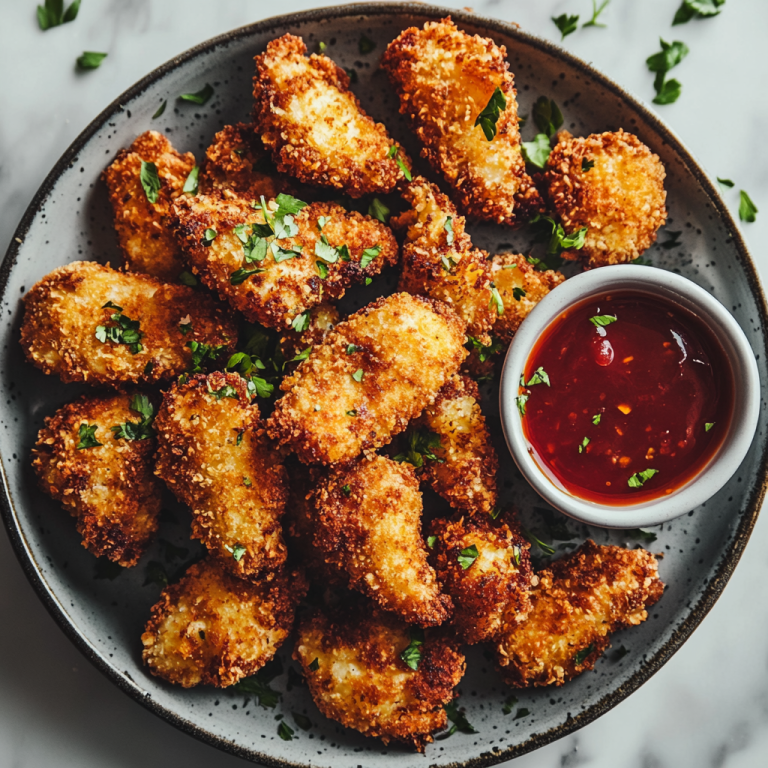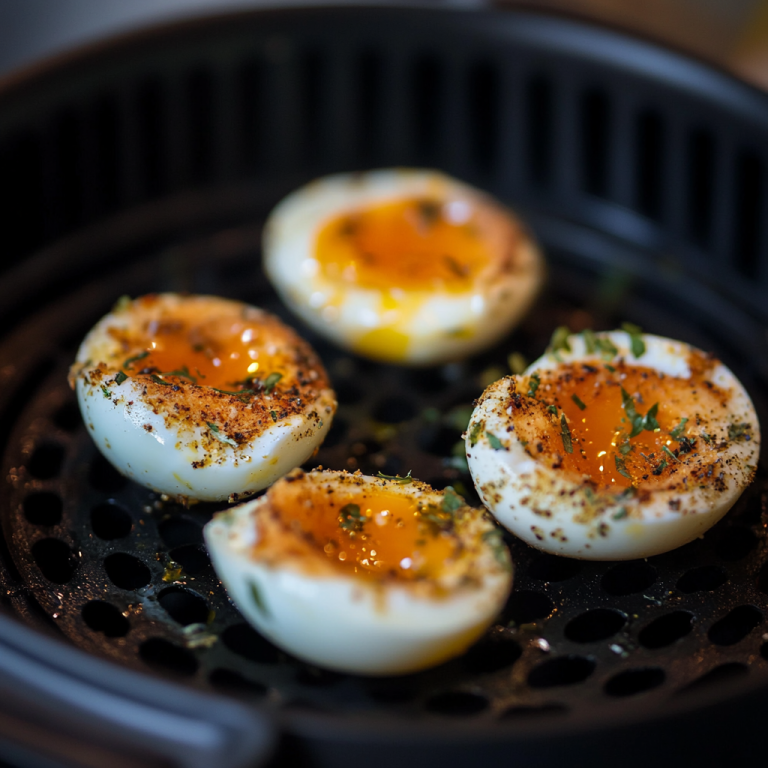Air Fryer Temperature For Pastries: Ideal Settings For Perfect Treats
Curious about how an air fryer can transform your pastry game? This article explores the ins and outs of air frying, revealing its benefits as a healthier and more efficient cooking method. Discover the ideal temperature for different pastries, along with tips to achieve that perfect golden finish. Common pitfalls will also be highlighted to ensure your treats come out just right every time. Get ready to elevate your baking skills with the magic of air frying!
What is an Air Fryer and How Does it Work?
An air fryer is a versatile kitchen appliance that employs convection technology to circulate hot air, offering a healthier alternative to conventional frying methods. It enables users to achieve crispy and golden brown results across a variety of dishes, including pastries, while using significantly less oil. This innovative appliance is capable of cooking an extensive range of foods at various temperatures, making it an critical tool for preparing both savoury and sweet recipes. A comprehensive understanding of how an air fryer operates can assist users in mastering the timing and temperature control necessary for optimal cooking results.
Benefits of Air Frying Pastries
Air frying pastries presents numerous advantages that enhance both the culinary process and the quality of the final product. This method facilitates the preparation of delightful homemade pastries characterised by flaky layers and crispy textures while significantly reducing the amount of oil required, thereby promoting healthier eating habits. Furthermore, the cooking efficiency of air fryers allows for the timely preparation of favoured festive pastries without compromising on flavour or texture.
Healthier Alternative to Traditional Frying
Air frying presents a healthier alternative to traditional frying methods by significantly reducing the amount of oil used, thereby lowering the fat content in various dishes. This cooking technique employs hot air circulation to achieve the desired crispiness without excess grease, making it an excellent choice for health-conscious individuals. The health advantages of air frying go beyond mere fat reduction; it also enhances food safety by eliminating risks associated with deep frying. In contrast to traditional frying, which submerges food in hot oil, air frying relies on rapid air movement to produce similar textures. This approach helps mitigate the harmful effects of excessive oil consumption. Additionally, this method not only promotes heart health by lowering cholesterol levels but also diminishes the likelihood of harmful substances forming at elevated cooking temperatures. Moreover, air fryers typically operate at lower temperatures compared to deep frying methods, which aids in preserving more nutrients in the food. This results in meals that are not only safer but also more nutritious. Consequently, for individuals seeking to maintain a balanced diet without sacrificing flavour, air frying represents a compelling and innovative culinary option.
Quicker and Easier Cooking Process
The air frying process offers a more efficient and straightforward alternative to traditional baking or frying methods, enabling individuals to prepare delicious pastries in a significantly reduced timeframe. With minimised preheating times and shorter cooking durations, air fryers are particularly well-suited for busy individuals seeking to optimise their meal preparation. This convenience not only saves time but also simplifies the execution of recipes, making it accessible for both novice and experienced pastry chefs. This innovative cooking appliance fosters creativity, allowing users to prepare quick recipes without the complications often associated with conventional ovens. One can envision preparing flaky croissants or tender doughnuts in just minutes, all while achieving a perfect golden-brown finish. As meal planning becomes more streamlined, the capability to cook multiple batches in succession enhances overall cooking efficiency, alleviating stress during hectic days. With preset functions, users can effortlessly attain consistent results, thereby fostering confidence in the kitchen and encouraging experimentation with various pastry styles and flavours.
Choosing the Right Temperature for Pastries
Selecting the appropriate temperature for air frying pastries is essential for attaining the ideal golden hue and desired texture. Various pastries necessitate specific temperature settings to ensure even cooking and preservation of their flaky layers, whether dealing with puff pastry or sweet pastries. Familiarity with these temperature guidelines, as well as the ability to adjust cooking times accordingly, can significantly improve the flavour and overall doneness of the baked goods.
Factors to Consider
When selecting the appropriate temperature for air frying pastries, several critical factors must be taken into account, including dough consistency, ingredient ratios, and the desired texture of the finished product. Each type of pastry, whether sweet or savoury, possesses distinct characteristics that influence the ideal temperature and cooking technique for optimal results. For instance, puff pastry requires a higher temperature to achieve a crunchy, flaky crust, whereas other pastries may benefit from a lower temperature to ensure even baking. The temperature at which the dough is mixed and rested can significantly affect its structure. A higher fat content may necessitate a cooler environment to prevent the butter from melting too quickly, which is essential for achieving the desired layered effect. Utilising a preheated air fryer is another crucial recommendation; this practice ensures that the pastries receive an immediate surge of heat, facilitating rapid expansion and yielding a desirable golden-brown exterior. It is imperative to monitor the pastries closely during the cooking process, as minor adjustments in temperature can substantially impact the final taste and texture. This underscores the importance of a comprehensive understanding of how each factor interacts during the baking process.
Recommended Temperature Range for Different Pastries
The recommended temperature range for air frying various types of pastries typically falls between 160 C to 200 C, which is suitable for most recipes. For more delicate pastries, such as doughnuts or sweet pastries, it is advisable to use lower temperatures around 160 C. This approach helps maintain moisture while achieving a desirable golden brown finish. Conversely, heartier pastries may necessitate higher heat settings to ensure appropriate doneness, providing the ideal contrast in food texture. It is important to recognise that baking times will vary according to these heat settings. For instance, at 160 C, lighter pastries may require approximately 10 to 12 minutes, while more substantial options, such as savoury turnovers, may take about 15 to 20 minutes at 190 C. To enhance the final presentation and flavour, applying a light brush of egg wash prior to cooking can contribute to a beautiful shine and added richness. Additionally, ensuring adequate spacing in the air fryer is essential, as it allows hot air to circulate effectively, resulting in the desired crispy texture. For optimal results, it is recommended to preheat the air fryer before placing the pastries inside, which can lead to consistently golden outcomes.
Tips for Achieving Perfectly Cooked Pastries
Achieving perfectly cooked pastries in an air fryer necessitates a combination of effective cooking techniques and meticulous preparation. By adhering to specific baking tips and comprehending the intricacies of air frying, one can produce pastries that are both delicious and visually appealing. From preheating the air fryer to monitoring cooking times and adjusting appliance settings, each detail significantly contributes to the overall outcome of the pastry.
Preparation and Cooking Techniques
Preparation and cooking techniques are crucial to the quality of air-fried pastries, beginning with the consistency of the pastry and the use of raising agent. A well-prepared pastry, combined with appropriate ingredient ratios, can produce flaky and flavoursome outcomes. Understanding the function of each ingredient and the method of preparation is essential for achieving the desired texture and taste in the final pastry product. For example, incorporating cold butter into the flour creates the desired layers of flakiness, while the precise ratio of flour to fat significantly influences the overall structure. Adding a small amount of salt not only enhances flavour but also supports gluten development, allowing the pastry to maintain its shape during cooking. The choice of flour whether plain or pastry flour also affects the final result, influencing both tenderness and elasticity. Furthermore, considering the temperature of the ingredients by keeping them as cool as possible can help maintain the ideal pastry consistency, ensuring perfectly air-fried pastries consistently.
Common Mistakes to Avoid
Avoiding common mistakes is crucial for mastering the technique of air frying pastries, especially in terms of preventing both overcooking and undercooking. Many novice cooks tend to underestimate the significance of timing and temperature control, which can result in undesirable outcomes, such as a soggy crust or burnt edges. By recognising these pitfalls, individuals can significantly improve their cooking efficiency and ensure consistently high-quality pastries.
How to Prevent Overcooking or Undercooking
To ensure that pastries are neither overcooked nor undercooked in the air fryer, it is imperative to monitor cooking times diligently and utilise the appropriate temperature settings. Observing the pastries closely during the cooking process will facilitate the achievement of optimal doneness, resulting in a crispy exterior and moist filling. By familiarising oneself with the indicators of proper cooking, one can avoid common culinary pitfalls and enhance pastry-making skills. For example, when baking croissants, a golden-brown colour and a puffed-up shape are indicative of readiness. In the case of fruit tarts, a bubbling filling can signify that the tart is fully cooked. Employing a food thermometer can further ensure food safety; for instance, pastries filled with cream should reach an internal temperature of 74 C. Setting timers and checking pastries a few minutes prior to the recommended cooking time allows for necessary adjustments, thus enabling consistent and excellent results.










